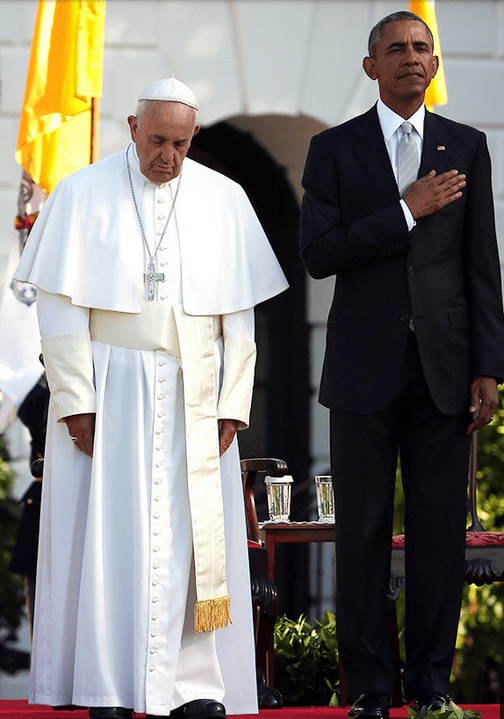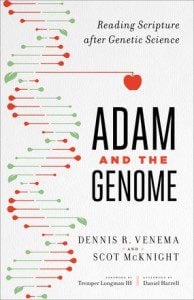Our Franciscan Pope in prayer. Image.
A full-time college student, by Brent Ashcroft:
ALLENDALE, Mich. — Most of today’s college students plan to do the usual four years of undergrad studies, get their degree, then enter the workforce.
For others, it may take a while longer.
Then there’s the rare few who love campus life so much, they keep coming back for more.
Ann Dilley is one of those people.
She graduated from a college in Connecticut in 1950. While majoring in art, she also earned a degree in English literature.
In 1952, Ann and her husband, Newt, moved to Grand Rapids. It didn’t take her long to become interested in metalsmithing, which is best described as crafting or making jewelry out of useful items.
“I went to a presentation at the Grand Rapids Art Museum where Beverly spoke,” said Dilley, referring to Beverly Seley, a metalsmithing professor at Grand Valley State University. “I loved hearing about it so much, I became a student of it, and I’ve been doing it ever since.”
Thirty-six years later, Ann is still a non-degree-seeking college student, currently enrolled in the metalsmithing class at Grand Valley, continuing her pursuit of education, and honing her craft.
At 91, Beskind is three times the age of many of the people around the table. She was hired at IDEO two years ago, after she saw a 60 Minutes segment on the company’s founder, David Kelley. She wrote a letter to IDEO—she found the company’s reliance on multidisciplinary problem-solving teams “most impressive,” and thought her 44-year career in applied design and occupational therapy could be valuable to the organization. For decades, Beskind worked in occupational therapy for the United States Army, designing braces and other equipment for polio patients and wounded soldiers; when she retired as a major in 1966, she opened the first independent occupational therapy clinic in the country. She continued to invent customized equipment for patients, and holds a patent for a series of inflatable therapeutic devices. Later, she attended art school, wrote a memoir, and taught classes in the history of Russian abstract art.
Beskind was first hired at IDEO for an exploratory project on aging: 44 designers from all 10 of the company’s offices pushed the boundaries with experimental, personal prototypes that included a stylish bike-walker hybrid and an “Instagran” photo feed that goes straight to an older relative’s television. In the two years since, her perspective has been undeniably useful for projects that aim to improve life for aging populations—the home health-care robots, the alternatives to traditional walkers—but her experience has also been relevant to those that simply aim to improve life. She works on projects that span all aspects of IDEO’s purview, from refining contact-lens cases to reduce fumbling to conceptualizing a new transit system for a metro area that employs the high-speed mag-lev technology used by UPS to route packages.
It’s fair to say that in the U.S. we generally think about aging as a gradual subtraction—a taking away of things that are important to us. But Beskind thinks differently about the changes that she and her peers are experiencing. “You have to expect change and embrace it,” she says. “There isn’t a day that goes by that I don’t.” Even if the change is that her fingers are less nimble, her balance a little more unsteady, or her vision faltering, she believes those are changes designers can address as she has: by adding rubber rockers to ski poles for additional traction and momentum while walking, say, or constructing a lighted magnifying board for reading the newspaper. Every new challenge presents an opportunity to innovate: This is the fundamental idea that drives her work.
On the decline of domestic help.
Bee-apocalypse? How about beekeeper-apocalypse? Jon Entine:
Scientists are now in agreement that we are not facing a beepocalypse as many in the media environmental activists and journalists have been predicting. Bee populations aren’t declining; they’re rising. According to statistics kept by the U.S. Department of Agriculture and the Food and Agriculture Organization of the United Nations, honeybee populations in the United States, Canada and Europe have been stable or growing for the two decades
But the latest statistics have not stemmed the tide of dire warnings. The focus has shifted from the pollinators themselves to beekeepers. Tim Tucker, president of the American Beekeeping Federation recently said: “It’s not the bees that are in jeopardy. …. I believe we’ll always have bees. … [But] unless things change, what’s in jeopardy is the commercial beekeeping industry.”
University of Maryland bee researcher Dennis van Englesdrop echoed the sentiment: “We’re not worried about the bees going extinct …. We’re worried about the beekeepers going extinct.” [HT: JS]
Conetoe, North Carolina (CNN)An hour east of Raleigh, North Carolina, lies the predominantly African-American community of Conetoe — population 300. The town is surrounded by farmland, but the nearest grocery store is 10 miles away, making it one of the country’s many “food deserts,” where fresh, nutritious food is not readily available.
But during the last decade, it has become the center of a movement for healthy living, driven by the Rev. Richard Joyner, a local pastor. It’s an effort Joyner started after watching many of his parishioners die from preventable diseases.
“Diabetes, high blood pressure — when we first got started, we counted 30 funerals in one year,” Joyner said. “I couldn’t ignore it because I was spending more time in funerals than anything else.”
So Joyner started a community garden and enlisted local children to help him care for it. Today, his nonprofit, the Conetoe Family Life Center, manages
A town in southern Oregon will hold a public meeting to discuss how to deal with droves of fearless deer that wander the streets, occasionally acting aggressively toward residents, state wildlife officials said on Tuesday.
The “Deer Summit 2015” will be chaired on Wednesday by Ashland Mayor John Stromberg as part of efforts to address deer that have stalked people, pawed at them with their hooves and even stomped on small dogs.
“The deer have no fear of humans,” said Mark Vargas, District Wildlife Biologist for the Oregon Department of Fish and Wildlife.
The confident deer are a product of a long tradition in the town of 21,000 people of feeding and befriending them, Vargas said.
For the last two or three decades, the black tailed deer have been known to roam into yards and stroll the downtown area of Ashland, which lies in the heavily forested foothills of the Siskiyou and Cascade Mountains.
Very good advice for parents to guide their children in use of internet.
What we see is not what it is: Nicholas Dawidoff:
Football is a blurry-fast, rough game in which twenty-two players, obscured by armor and masks, zoom around before slamming together in shapeless protoplasmic scrums. It also, somewhat remarkably, works very well on television. But football on television is an entity unto itself: the comprehensive illusion of football, far from the full picture. As a result, there may be no activity that draws closer public scrutiny that the public knows less about.
Having all but lived with a group of N.F.L. coaches from 2011 to 2012 in an attempt to better understand the professional game, I am often asked what I can see in the flow of events when I watch a game on TV that I couldn’t see before. The answer is far less than you might imagine, and for reasons that speak to the nature of the sport and its relationship with TV.
For mall walkers, Georgia Perry:
At 7 in the morning inside the Mall of America, capitalism sleeps. There are rows of kiosks with metal grates latched shut. Zamboni-like machines polish the floors. The crowds of shoppers—enough people on any given day, it’s been estimated, for the Mall of America to qualify as Minnesota’s third largest “city”—won’t enter for another couple hours.
The only people here now, save for a few security guards and other employees, are the mall walkers.
While the origins of mall walking, or walking in shopping malls for exercise, are unclear, it is now a practice so prevalent throughout America that a reportreleased earlier this year by the CDC listed shopping malls as the second most popular venue for walking in the country, just behind neighborhoods. The report touts malls as “free, relatively accessible, and pedestrian-friendly environments.” These features appeal especially to older people, who value the level surfaces, benches, water fountains, and restrooms that malls provide. Also, the “latest fashionable workout attire is not a requisite for mall walking.”
Five years ago, the book world was seized by collective panic over the uncertain future of print.
As readers migrated to new digital devices, e-book sales soared, up 1,260 percent between 2008 and 2010, alarming booksellers that watched consumers use their stores to find titles they would later buy online. Print sales dwindled, bookstores struggled to stay open, and publishers and authors feared that cheaper e-books would cannibalize their business.
Then in 2011, the industry’s fears were realized when Borders declared bankruptcy.
“E-books were this rocket ship going straight up,” said Len Vlahos, a former executive director of the Book Industry Study Group, a nonprofit research group that tracks the publishing industry. “Just about everybody you talked to thought we were going the way of digital music.”
But the digital apocalypse never arrived, or at least not on schedule. While analysts once predicted that e-books would overtake print by 2015, digital sales have instead slowed sharply.
















